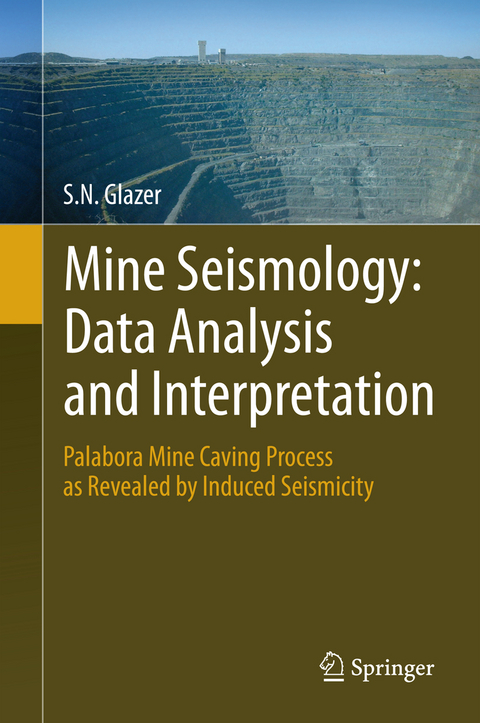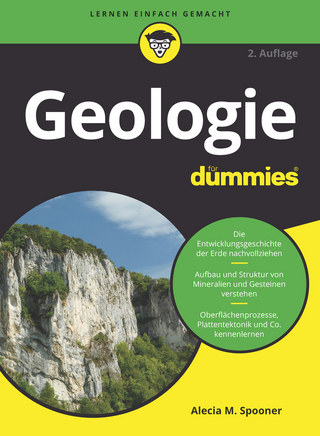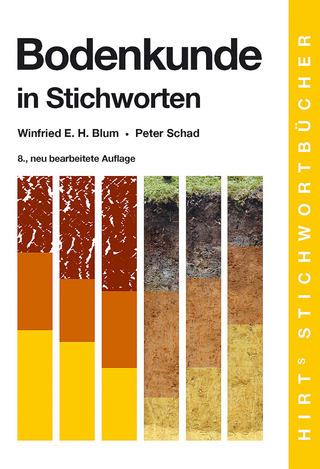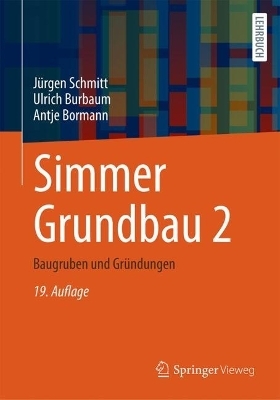
Mine Seismology: Data Analysis and Interpretation
Springer International Publishing (Verlag)
978-3-319-32611-5 (ISBN)
This book is a fascinating read, written by one of the world's leading mine seismologists. It summarises the history and progression of mine seismology. It outlines the practical use of back analysis of data and how it can be used on a daily basis. The book explains how mine seismology can be used as an effective monitoring tool for key events as the mine progresses as well as for future caving operations.Anthony Allman MAusIMM, CP(Min), RPEQ Antcia Consulting Pty Ltd, Director, Mining Engineer
The content of the book is really solid and robust and I have no doubt it is going to be considered a great contribution for the mining community.Raul Fuentes, Former Director of Master Program in Geomechanics Applied to Mining, Universidad de los Andes, Santiago, Chile
This book is long overdue and helps to present some difficult concepts in a way that they can be clearly understood by non-experts in this area. Stefan has personally managed to take mine seismology from being a black-art into a useful tool to help make mines a safer and more controlled environment. Neil Hepworth C. Eng, MIMMM, Geomin Consultorio - Brazil, Consultant Mining and Geotechnics
Seismic monitoring is an important tool in cave management. The information from monitoring allows a number of key production factors to be determined including cave advance rates, the approximate location of the cave back, insight into the size of the air gap and allows the tracking of broad changes in stress. These all assist in the day to day management of a safe and successful cave. Dr. Glazer's book provides guidance on the application of microseismicity to cave management through a review of appropriate theory and more importantly illustrates its use through case histories, particularly from the Palabora block cave. The text will be a good addition for all practitioners in cave engineering and operations.Allan Moss, General Manager - Grasberg Underground Liaison, Copper Development, Rio Tinto
Dr Stefan N. Glazer has 40 years of experience in the application of geophysical methods in the mineral prospecting and mining industry. He has been an independent mine seismology consultant since 2004, and before that he worked as a mine seismologist for AngloGold and then PMC. He has an MSc degree in Prospecting Geophysics (1972) and a PhD degree in Mine Geophysics (1997), both from the AGH University of Science and Technology, Krakow, Poland. Prof. A. Kijko promoted the PhD thesis entitled “Practical applications of stress index and other seismological parameters in combating rock burst hazard in deep gold mine of Vaal Reefs, South Africa,” while Prof. S. Gibowicz and Prof. S. Lasocki reviewed it. He has written a number of technical papers, the last eleven of which are on monitoring the PMC caving process. He was involved in the Mass Mining Technology 2 Project with his research work entitled titled “Seismic signature of the caving process,” which involved analysis and interpretation of seismicity recorded at El Teniente, Chile, PT Freeport DOZ Mine, Northparkes Mine Lift 2 and PMC. The aim of this research was to make maximum use of the recorded seismicity to monitor and manage the caving process. In 2007 and 2011 he lectured on the subject of Mining Induced Seismicity for the course in Mining Geomechanics Master Program, School of Engineering, Universidad de Los Andes, Santiago, Chile.
1. Introduction.- 2. Applications of Seismic Monitoring in Combating Rock Burst Hazard.- 3. Seismic Parameters and their Physical Meaning.- 4. Ranges of Parameters.- 5. Interpretation Methods of Mine Induced Seismicity.- 6. Palabora Seismic History.- 7. Palabora Caving Process as Evidenced by Induced Seismicity.- 8. Caving Process and Seismic Hazard.- 9. Problems Related to Software Versions.- 10. Seismic Preconditioning below Lift 1 Mine and its Influence on the Cavability of Lift 2 Cave.- 11. Palabora Lift 2 Mine Seismic System.- 12. Seismic Hazard Monitoring for Lift 2.- Appendices.- Index.
| Erscheinungsdatum | 08.10.2016 |
|---|---|
| Zusatzinfo | XV, 414 p. 261 illus., 36 illus. in color. |
| Verlagsort | Cham |
| Sprache | englisch |
| Maße | 155 x 235 mm |
| Themenwelt | Naturwissenschaften ► Geowissenschaften ► Geologie |
| Naturwissenschaften ► Geowissenschaften ► Geophysik | |
| Schlagworte | Civil Engineering • Earth and Environmental Science • Geophysics/Geodesy • Geotechnical Engineering & Applied Earth Sciences • Geotechnical Engineering & Applied Earth Sciences • Induced Seismicity • Mine Induced Seismicity Parameters • Mine Seismology • Monitoring Seismic Hazard • Natural Hazards • Seismic Monitoring Caving Process • Seismic Preconditioning |
| ISBN-10 | 3-319-32611-2 / 3319326112 |
| ISBN-13 | 978-3-319-32611-5 / 9783319326115 |
| Zustand | Neuware |
| Informationen gemäß Produktsicherheitsverordnung (GPSR) | |
| Haben Sie eine Frage zum Produkt? |
aus dem Bereich


